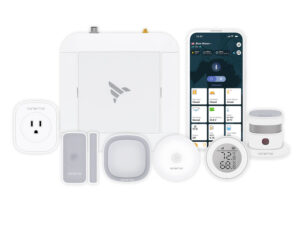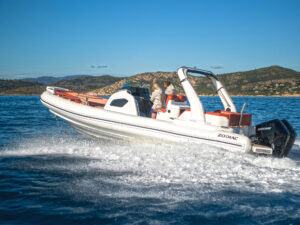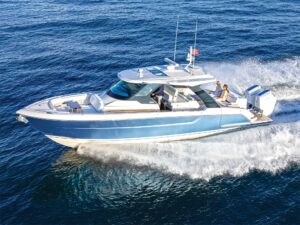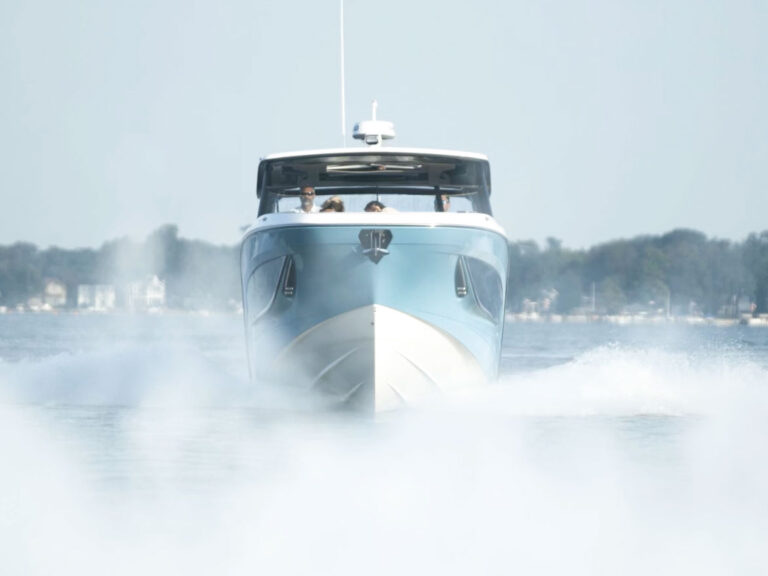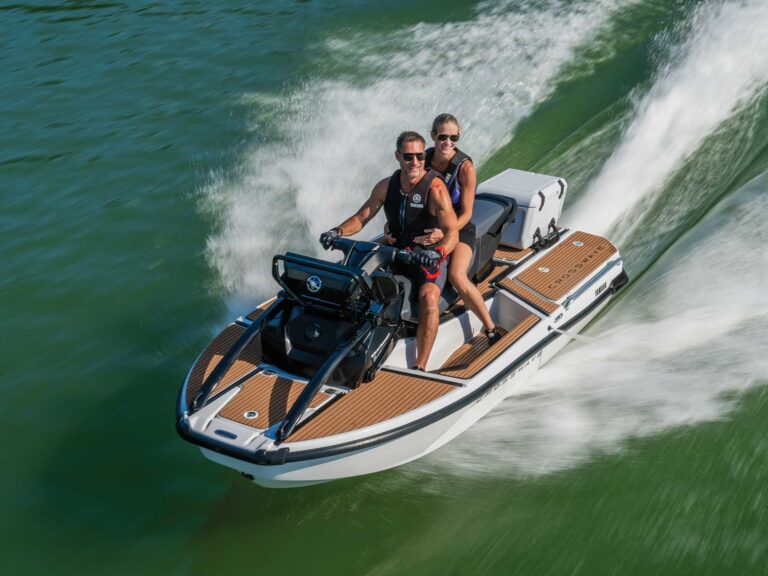You pull the cover off your boat one day and are met with unsightly, blotchy pink stains on your vinyl cushions and upholstery. WTH? You try every cleaning agent known to man, but nothing eradicates the stains.
These stains are not from a spilled drink or chemical or fluid. These permanent stains are the result of, “pinking,” a bacterial stain that is affecting boats all across North America. Gestalt Scientific Corp, Redmond, Washington, now offers the product, Pink Away, to remove these stains. In this article we test the consumer version of Pink Away, as well as provide you with the low-down on what pinking is and how you can prevent it or deal with it if it occurs aboard your boat.
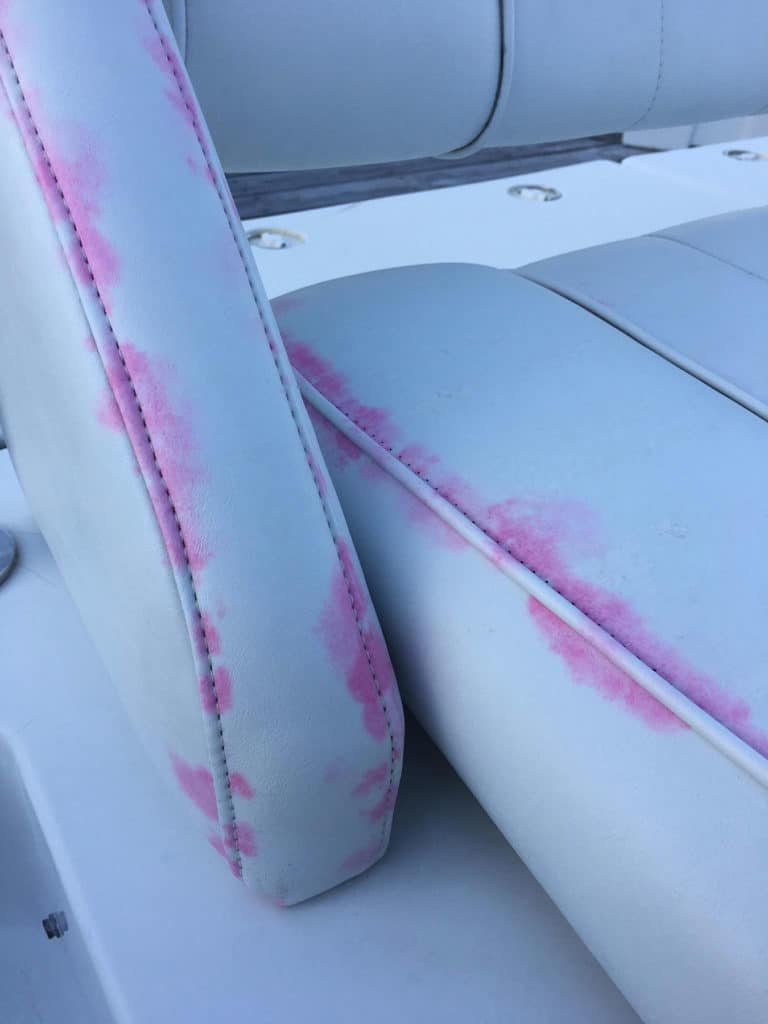
The scourge is called pinking, and it is one of the least discussed topics in the boating industry. Companies stay tight-lipped about it because, until recently, there has been nothing that anyone could do to fix it short of replacing the upholstery.
Today there is a treatment for pinking. Based on Boating’s research and testing, it appears effective. But before we go there, let’s examine the cause of this malady and how you might be able to prevent it in the first place.

Source of Pinking
“It’s a nasty problem and huge inconvenience for boat companies and upholstery suppliers,” says engineer Scott Laster, CEO of Gestalt Scientific Corp. in Redmond, Washington. “Pinking affects 10 to 20 percent of boats worldwide.” Based on 12 million boats in the United States, that means anywhere from 1.2 to 2.4 million boats suffer from pinking in this country alone.
“The stains are caused by a strain of bacterium known as Streptoverticillium reticulum that infests boat upholstery between the top layer of foam and underside of the vinyl,” Laster reveals. This strain occurs virtually everywhere and is normally harmless, he adds. But once it finds its way into vinyl upholstery, usually through the tiny holes in the stitching or other seams, problems begin.

Gestalt’s research shows the problem is more prevalent on boats that frequent freshwater rivers and lakes in the Southeast and Pacific Northwest. The company’s data also indicates that the bacteria cannot live in salt water.
“This bacterium needs four things to establish a colony in vinyl upholstery,” Laster explains. “It requires oxygen, fresh water, warmth and food.” The first three elements are easy to find in a lot of boats, especially ones in humid climates. Food, on the other hand, requires people — the bacteria feed on the oils and sloughed-off cells from human skin, as well as the chemical para-aminobenzoic acid (PABA) found in some sunscreens.

Pinking occurs when the bacteria run out of food and begin to die. “Through a metabolic process, the bacteria secrete a red dye,” Laster reveals. “The dye is then wicked up through vinyl material, and this results in blotchy pink or light red stains on the surface of the upholstery.”
Preventive Steps
“To help prevent pinking, you need to eliminate the elements necessary for the bacteria to get established,” says Laster. To cut the food supply, clean the upholstery thoroughly after each trip. If you’re not washing the boat, wipe down all the vinyl with a clean towel at the end of the day. Also, avoid the use of sunscreens containing PABA.

To stem the supply of water, towel off the boat’s interior and its upholstery to ensure everything is completely dry before you put on the boat cover. Also, the cover should be dry, at least to start with.
Check out this comparison of chamois products you can use to dry off your boat!
New Treatments
If pinking does occur, Gestalt Scientific offers two patented options to eliminate the stains and ensure that they do not return. One is a commercial solution done by a certified boatbuilder or boat dealer, and the other is a self-administered home-treatment solution.
The commercial system includes treatment with a special light known as a halotron that works in tandem with a chemical agent that’s applied to the affected areas. The chemical responds to a specific spectrum of light broadcast by the halotron. After a 60-minute treatment, the stains are gone and will not return, claims Laster, who likens the treatment to a teeth-whitening procedure at the dentist’s office.
Read Next: First Aid For Vinyl Boat Seats
Cost of the treatment can range from zero (if the boatbuilder chooses to cover this under warranty) or as much as $400, depending how much pinking has occurred.
The DIY treatment system is less costly and does not require a halotron light but takes more time. “A small cartridge of the PinkAway home solution ($39.95) will cover 6 to 7 square inches of stained vinyl or four to five quarter-size blotches,” Laster says. “You can usually treat two cushions with one cartridge,” he adds. “For a boat with widespread pinking, it might cost as much as $250 for the home solution.”

Test Results
To gauge the effectiveness of the home solution, Boating tested PinkAway on a small swatch of textured marine PVC vinyl (supplied by Gestalt) that was affected by pinking. We scrubbed the vinyl per the instructions and also to see if the pinking would just wash away (it didn’t). After the material dried, we masked off a square inch and then applied the chemical per the directions, which called for four coats. We applied it once each day over a four-day period, and then removed the masking tape. The application areas had returned to their original white color.


Actually, it was clear after the second treatment that PinkAway was achieving results; the pinking had disappeared. But Gestalt requires all four applications to ensure that the pinking does not return. It has been three months between finishing and this writing, and no discoloration has reoccurred in the treated area.

One important caveat is that PinkAway works only on white or near-white vinyl. If it is used on colored vinyl, such as beige, blue, brown, green or red, it may fade the color of the material. To learn more, visit gestaltscientific.com.
Types of Pinking
There are actually two types of pinking that affect marine PVC vinyl, according to Gestalt Scientific Corp. The most common is bacterial pinking, which we have discussed. The other is chemical pinking.

Chemical pinking arises from a byproduct of certain glues in marine cushions, which change to a pink or red color and then wick to the surface of the material.
It is triggered when another material such as a boat cover is left in contact with the upholstery. The vinyl is then subjected to excessive heat, and the result is chemical pinking, which appears in more geometric patterns than the blotchy nature of bacterial pinking.
To help prevent chemical pinking, don’t let a boat cover rest on the upholstery while the boat is stored. If you cannot avoid this, put a towel between the vinyl and the cover material.
The treatments from Gestalt are designed for bacterial pinking only.


